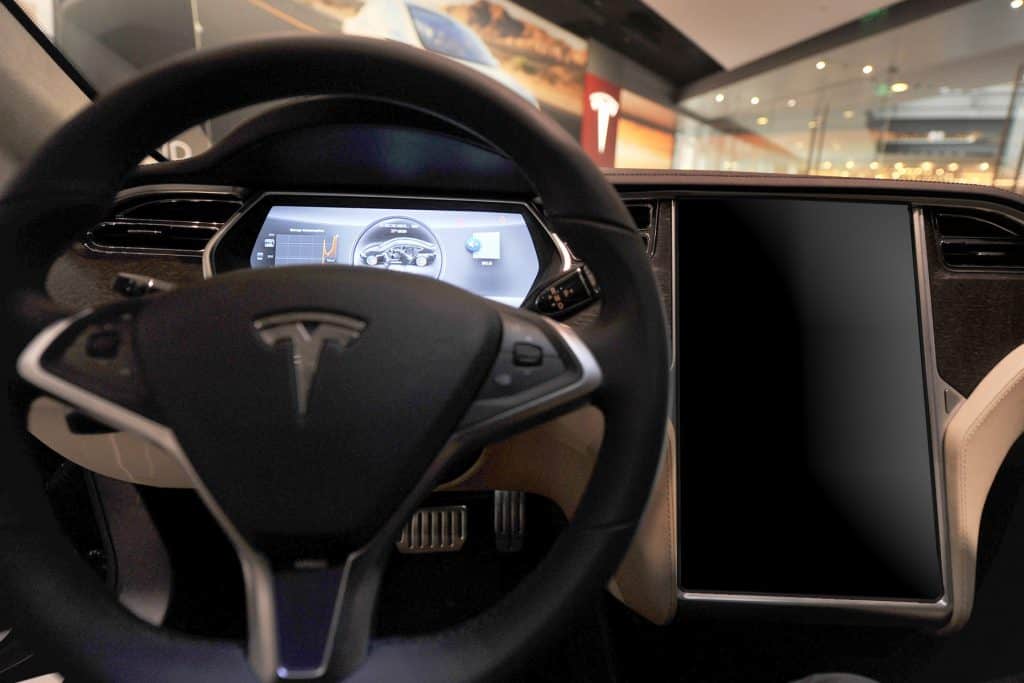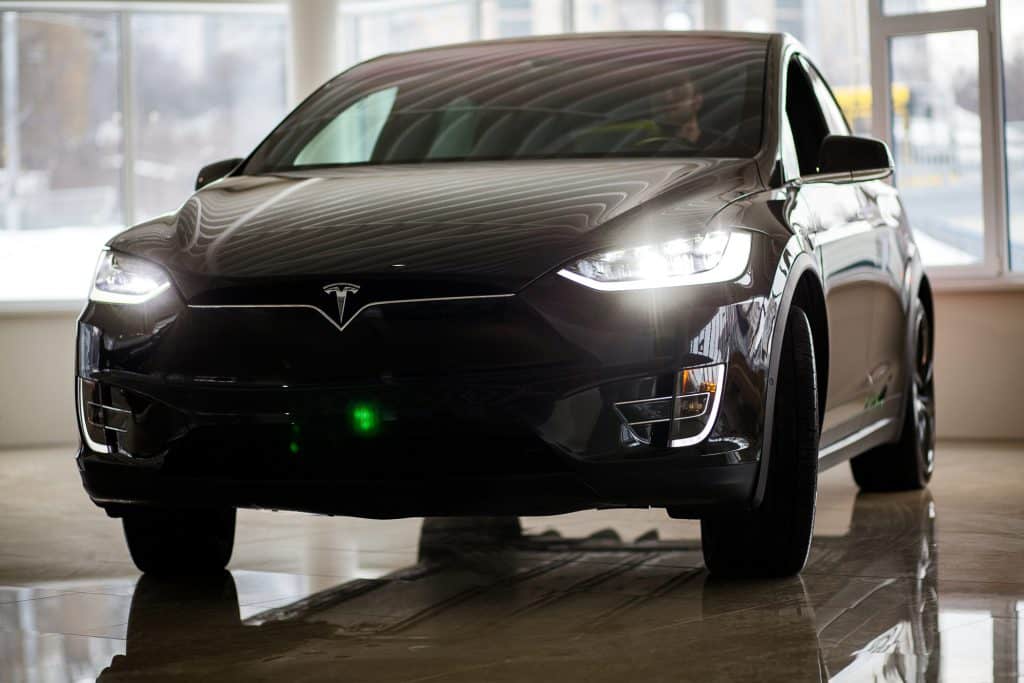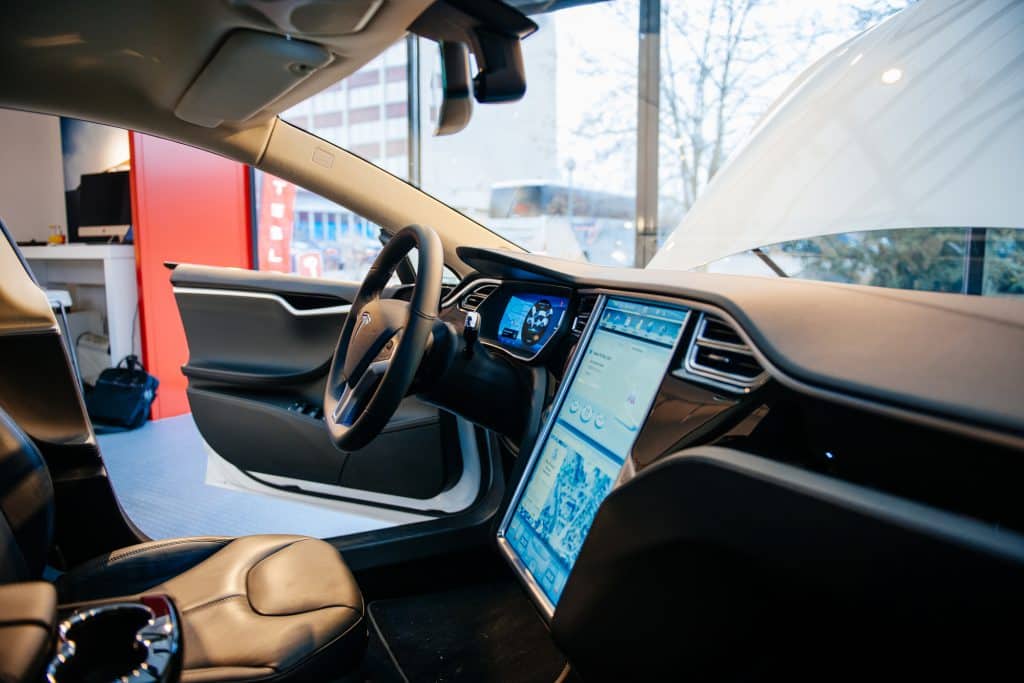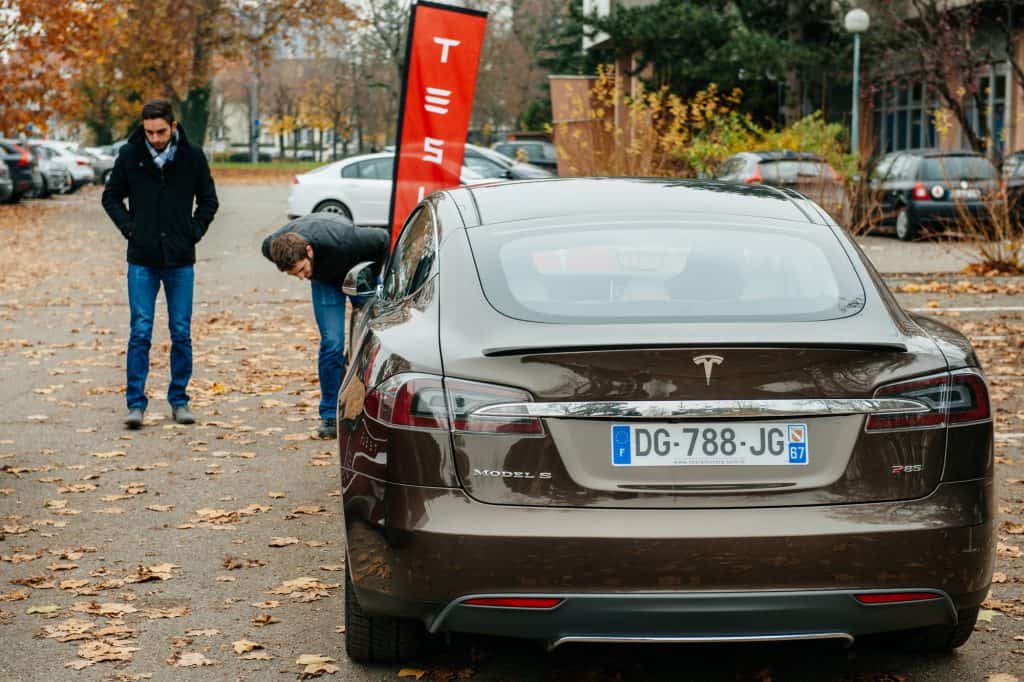As if glitching screens on older Tesla models between 2014 and 2018 wasn’t enough, even the very latest Teslas that have been “upgraded” with MCU2 and received the latest system patches and updates are said to be still experiencing serious issues. The most serious screen issue is referred to as the “Black Screen of Death,” a clear allusion to the infamous blue screen of death that was a famous feature of a crashing Windows PC system.
What is this black screen of death? Why does it happen? How can we fix it? In today’s blog we’re aiming to answer all of these questions and more to ensure that a black Tesla screen never takes you off guard again in the future.
Why Does the Black Screen of Death Happen?

To start off today’s blog, let’s take a closer look at the main apparent reasons for these screen problems. Our list is by no means definitive, but according to available data and information from Tesla users, these are common causes of problems with the screen.
Most Likely: eMMC Failure
The eMMC refers to the embedded Multimedia Card memory, which has been posited by Tesla themselves as the most likely culprit for touchscreen failure, especially on models that were built before 2018.
Tesla has talked about extending the warranty on their touchscreen because they have become aware of its failings and have even made admissions to such problems.
Some conditions were already laid out for Model S versions experiencing these screen issues. As long as they were built before 2018, had been on the road less than 8 years, and had a mileage of under 100,000 miles, they’d be eligible for free screen repairs.
Tesla has admitted that the eMMC is the key responsible component for Tesla screens losing their touch-responsiveness over time. They have even stated that the lifespan of the touchscreens might only be 5-6 years, which is less than how long people expect to keep their cars for, of course.
Recalls have been issued already to try and deal with the problem and replace the defective units with more reliable ones.
Your Own Error
For those screens where the eMMC isn’t responsible, there could be issues on the part of third-party apps being run that can cause some issues on the system. If you use music services like Spotify, for instance, then these apps can sometimes cause the screen system to get stuck in a loop and crash.
This is something that can happen on all computers, including smartphones and tablets, where third-party applications are being run.
System Malfunction

If you are yet to upgrade to the latest MCU2 system, then your screen is more likely to experience these kinds of errors from a simple overload of things all trying to work at once, from the third-party apps to the regular functioning.
MCU2 was designed to minimize this problem, and while as we’ve stated it won’t completely eliminate any and all issues, it will certainly move things positively in the right direction. There are likely to be even more bugs on those who have not yet upgraded.
Best Solutions for Tesla Black Screen Problems
Now we have a few practical and simple solutions to the black screen of death problem, all of which can be done by Tesla owners with minimum fuss and worry. They are essentially just manipulations of the software that don’t involve any big hardware fixes, nor any tools or meaningful technical knowledge.
Resetting the Touchscreen

If you’re driving an MCU2 vehicle, then all you have to do to reset both your touchscreen and dashboard screen (if you have one) is to press down on both scroll buttons found on either side of the steering wheel. You should only need to hold them in for about 10 seconds to see the screens reset.
If you have MCU1, then the scroll wheels will reset the main touchscreen, but to reset the dashboard screen, you’ll have to press the button directly above the scroll buttons. Same rules apply: press both simultaneously for about 10 seconds.
The good news is that if you are driving and it is not convenient for you to pull over safely, then you can perform this reset even while the car is in motion and your important safety gear like lights and safety gear will still be working.
You just won’t see any indication of that on your screens. The process of resetting and restarting takes about 30 seconds or so. The main noticeable thing that will go off while you reset during a drive is your HVAC system, but it will come back on as soon as the system has finished resetting.
We should point out, however, that you should only do a reset while still driving if the situation makes it impossible for you to pull over safely and perform the reset there. Not being able to see your speed and other important drive information is dangerous, as is being unsure of exactly how much of your Tesla you are still in control of.
Power Cycling
This process takes a bit longer, but it is still quite easy to do and doesn’t have any risk to your systems.
We’ll explain step by step what you can do:
Step 1: Park your car, make sure all the doors are closed, and then press down on the brake
Step 2: Keeping your foot on the brake, hold down the scroll buttons and the two buttons above them for up to 1 minute
Step 3: Your whole vehicle should be rebooting at this point. Give the vehicle about 4-5 minutes before you start using the screen and other functions.
Additional Quick Fixes Worth Trying
There are a few other ideas you might try to see if you can get the screen working again:
- Unplug any and all devices from the USB ports
- Turn off Bluetooth on your phone or other devices
- Clear trip data from the “Controls” menu
- Delete locations from the memory
The last two points on the list can also be done with a factory reset (see below for more on that). These are simple ideas that are all designed to prevent file corruption and overburdening the system with data.
Even if they don’t fix the problem, they may improve performance enough for you to get through your day before taking the car to the Service Center.
Other Solutions for Tesla Black Screen Problems

If the above solutions don’t work, then the above things can also be tried, but these are far more extreme solutions that you likely don’t want to attempt without the help of a Tesla professional.
Hard Reboot
When your home Wi-Fi is playing up, what’s a typical solution that you use? Do you often try unplugging it, and plugging it back in again? What about your smartphone? If you have an Android phone, do you try taking the battery out, leaving it for a minute and then restoring it?
These are kinds of hard reboots that you do with your home electronics. The same can work on a Tesla, but it’s much more complex.
- Step 1: Make sure climate control is turned off, but leave a window open to prevent you from being totally locked out of the car.
- Step 2: Open the trunk, remove the storage panel covering the battery, and disconnect the battery, along with the first responder loop.
- Step 3: Wait for 2-3 minutes, then reconnect the battery, then the first responder loop. It’s critical to do it in that order.
- Step 4: Replace the storage panel of the trunk.
Factory Reset
A “Factory Reset” is where your Tesla is restored to its original condition when you bought it. Once again, it’s something you can do to your smartphone or home computer. If you’ve tried it on one of those devices before, then you know what’s coming.
This is actually something you can do without the help of a Tesla professional, but it is still a last resort, and should be the absolute last thing you try before taking it into a Tesla Service Center.
On your screen, click the car icon to open up controls, then press on “Service” and then on “Factory Reset.” You’ll be prompted to sign in and then asked if you are sure you want to perform the reset. It will remind you that all of your data will be erased from the system during the reset, but it’s likely you already know that and have resolved to try the factory reset.
You wait about 120 seconds and then it will come back on, test the fans, and then restore the screen in full asking you to sign in and complete the setup. The entire process including configuring your settings again should take about 20 minutes.
Conclusion: The Inevitable Result of Digitizing Our Cars
We should remember that the modern electric car is essentially a giant computer on wheels. They’re far more digitized and computerized than regular cars, hence the amazing ability of cars like Teslas to be able to receive over-the-air updates that not only improve the operating system, but can even change the on-road performance.
With great digitization and computerization, we have to also expect a few glitches and imperfections on the way. These types of problems are invariably solved quickly and can often be fixed without the need for company-ending recalls like in the past.
Therefore, don’t panic if and when you encounter the black screen of death. Work through the solutions we have given to the point where there’s nothing more you can safely try yourself. At that point, it’s time to make an appointment with the service center to get it fixed up.
1 comment
I have taken the car to Tesla Service 3 times and they have not fix the problem. And, the issue happens now more than before; happens several times per day. Do you know of other Tesla owners with the same problem?